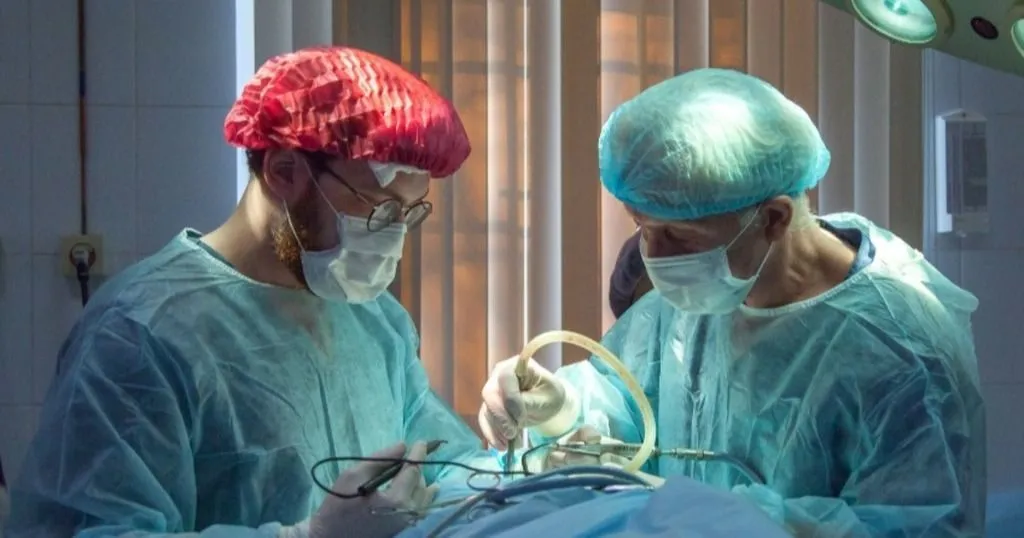Operating room layout: impact on work patters and flow disruptions
With use of prerecorded videos of surgeries, researchers examined the impact of the layout of an OR on work patterns and flow disruptions of a circulating nurse.
Posted by
Published on
Tue 20 Feb. 2018
Topics
| Coding Behavior | MediaRecorder | Patient Safety | Teamwork | The Observer XT | Video Observation | Viso | Medical Encounter |

The first time I entered an operating room was during an internship in a Dutch hospital. As part of my nursing education, they allowed me to attend some general surgeries. After I had exchanged my white nurse suit for a green surgical version, I was ready for it.
I was fascinated from the first minute onwards. All that equipment, all those people working together, a real patient on the table who had no clue what was going on due to the anesthesia… so much happened in a relatively short time. Impressive!
An operating room (OR) is an exciting workplace, where all team members must cooperate toward shared goals, such as making safe and efficient patient care a priority. Each member of the surgical team has specific personal responsibilities in order to achieve that goal. Maintaining a big-picture oversight of the patient's condition is one of the circulating nurse's responsibilities.
A circulating nurse is the ultimate patient advocate
The research of Sara Bayramzadeh and her team focuses on the impact of healthcare facility design on user experience, safety, and efficiency. She investigated whether the layout of an operating room can influence the movement patterns and disruptions of a circulating nurse (CN).
Circulating nurses are vital to the surgical team. The CN is the most mobile team member, and works outside the sterile field. The CN makes sure the patient is comfortable and safe, and is responsible for charting what is happening in the operating room, keeping a sterile environment, and tracking the supplies and equipment used.
The CN serves as an advocate for patients since they are unable to speak for themselves due to being under anesthesia. The CN observes, monitors, and manages potential threats at and around the surgical field.
Efficiently moving around within the OR
Because CN’s are constantly moving between various zones within the OR, the zone location of equipment, storage units, phones/intercoms, computer workstations, and doors are important to the efficiency and effectiveness of the CN’s workflow. But aren’t these zones too far apart? The layout of the OR may contribute to unnecessary movement or create barriers to movement inside the OR, resulting in workflow disruptions.

Do you need to capture a sequence of scenarios in multiple rooms or areas, for example in the anesthetic room, the OR, and the recovery room? With Viso it is now possible to combine the recordings into one chronological session.
Behavioral mapping
The researchers used prerecorded videos of 25 pediatric and general adult surgeries, conducted in three different OR’s, which varied in size. With four cameras of Media Recorder in each OR, they captured the scenes from different angles, offering a complete overview. The Observer XT facilitated viewing all four videos simultaneously and coding the observations, including codes for the location of each surgical team member by location (zone), their activities at any time, and any surgical flow disruptions they might have experienced.
The activities of the CN, associating to the term PEMSI, were either
P: patient related, such as transferring or preparing the patient
E: equipment related, such as preparing, monitoring, moving, or cleaning equipment
MS: materials, instruments, or supplies related, such as preparing, or cleaning material, trash disposal, retrieving supplies
I: information related, such as phone calls, computer work, and paperwork.
Observing and coding the activities of the circulation nurse
Within PEMSI activities, information related activities were most frequent and the highest in total duration. The CN visited the CN’s workstation the most, which was extended to the surgical table. Across all surgeries, 91% of the CN’s activities required traveling through multiple zones. The movement patterns appeared to be similar in all three OR’s.
Since the CN makes frequent trips to different parts of the OR to support the activities of other team members, it was important to understand how the adjacencies between zones might support optimal travel patterns for the CN. It appeared that direct proximity between the CN’s workstation and the supply zone where key supplies are located was strongly recommended.
Furthermore, indirect adjacency between the CN’s workstation and the areas surrounding the surgical table where the CN may need to deliver or exchange items with the scrub nurse (who is in the sterile zone and responsible for handling instruments and assist the surgeon during the operation) is recommended. This allows for a timely response and at the same time allows the CN to maintain distance from the sterile zone to avoid contaminating the area.
What about the surgical flow disruptions (SFDs)?
The researchers looked at two kinds of disruptions:
- Layout related SFDs - incidents due to the lack of space to move around or the position of certain items in the OR that hinder the surgical staff’s performance.
- Environmental hazard SFDs - incidents such as the slipping or falling of staff members, cases with sharp objects and contaminated needles, excessive reach for assessing the patient, objects, or equipment.
In total, the CN was involved in 26% of all SFDs observed during all surgeries. Layout related SFDs were consistently more frequent than environmental hazard SFDs.
Since frequent disruptions during surgery can pose threats to both patient and staff safety, locating the frequently traveled zones closer together may reduce the involvement of the CN in disruptions. Understanding the nature of the CN’s movement patterns is important for the design and layout of an OR.
The goal is patient safety and high quality care
Appropriate adjacencies between zones can help minimizing unnecessary travels, and as a result, may help decrease the duration of each activity, distance traveled, and the risk of being involved in a flow disruption. A safe and efficient patient care is likely to be guaranteed.
Interested in human behavior research? Read more on 'How to study human behavior'!
Reference
Bayranzadeh, S.; Joseph, A.; San, D.; Khoshkenar, A.; Taaffe, K.; Jafarifiroozabadi, R.; Neyens, D.M. (2018). The Impact of Operating Room Layout on Circulating Nurse’s Work Patterns and Flow Disruptions: A Behavioral Mapping Study. Health Environments Research & Design Journal, 1-15. DOI: 10.1177/1937586717751124
Related Posts

Discussing uncertainty during cancer genetic counseling

The impact of health information technology on doctor-patient interaction

